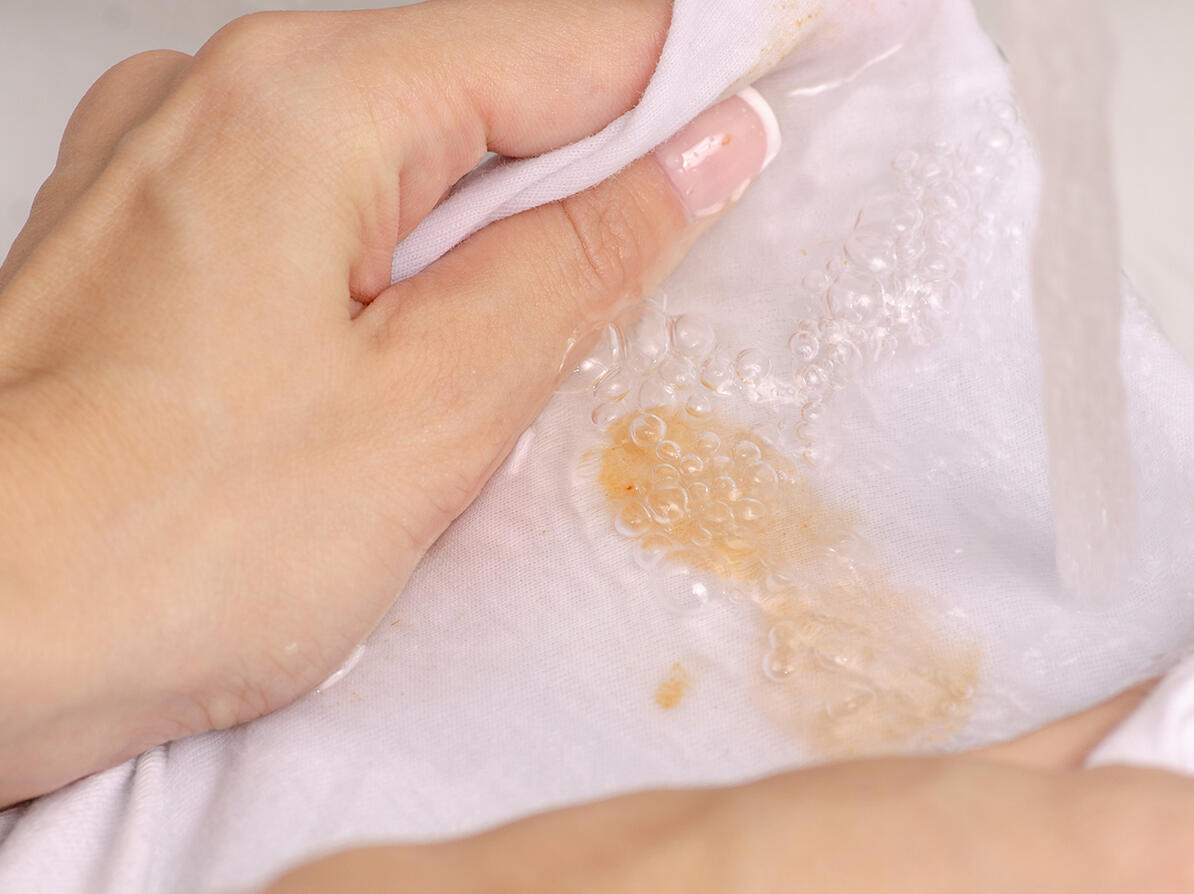Avoid these chemicals in stain removers
Some stain removers contain chemicals that are allergenic or suspected of being endocrine disruptors. See which chemicals to avoid.

Stain removers can be effective in removing grease stains or colored stains on clothing. However, our new test shows that stain removers can contain chemicals that are allergenic, environmentally damaging or suspected endocrine disruptors.
The individual substances in your stain remover are not problematic by themselves, but they can contribute to your overall exposure of unwanted chemicals in everyday life – also known as the cocktail effect. In addition, the substances in stain removers can affect the environment.
13 stain removers are good choices
We have tested different types of stain removers. Both solid soap, powder, spray and liquid stain removers with or without a brush.
More than half of 22 stain removers in the test are without unwanted chemicals and receive the best rating, the A-rating.
Suspected endocrine disrupters in 5 stain removers
In the test, 5 stain removers contain suspected endocrine disruptors. These are the substances Methyl ethyl ketone – also called MEK, parabens and BHT.
MEK is used to denature alcohol so that the alcohol cannot be drunk and is on the authorities’ list of substances suspected of being endocrine disruptors.
Keep an eye out for this allergenic substance
One stain remover contains Methylisothiazolinone (MI), which is a controversial and highly allergenic substance.
Studies from the National Allergy Research Center show that there are at least 1.000 new cases of MI allergy every year in Denmark.
These stain removers harm the environment
In the test, three stain removers contain substances that are problematic for the environment:
- Vanish Chrystal White contains a substance from the substance group LAS (linear alkylbenzene sulfonates).
- Dr. Beckmann stain remover spray and Dr. Beckmann stain remover brush contain Sodium pyrithione.
LAS is a group of substances that are problematic for the environment. These chemicals decompose slowly under oxygen-poor conditions and can be harmful to fish and other living organisms in the water.
Sodium pyrithione is both allergenic and classified as environmentally harmful by the EU Commission.
In general, choose products labelled the Nordic Swan Ecolabel if you want to avoid substances that are harmful to the environment. However, the Nordic Swan Ecolabel allows perfume.
If you want to avoid perfume, choose products labelled with both the Nordic Swan Ecolabel and the allergy labels “Asthma allergy nordic” or “Allergy Certified”.
Be aware of spray products
For pre-treatment directly on the stain, we recommend liquid stain removers with or without brush rather than stain remover sprays, where you may risk inhaling the product.
However, we have not tested how effective the different products are at removing stains.
Instead of stain removers, it may also be enough to apply dishwashing detergent to the stain or soak the clothes with regular detergent.
Behind the test
-
The Danish Consumer Council THINK Chemicals bought various stain removers in stores.
We have purchased a large selection of stain removers to cover the market broadly. Therefore, we have purchased stain removers in powder form, pump sprays and stain removers applied with a sponge or brush.
This test is a declaration test. This means that the products have not been analyzed for the quantities in which the substances are included. Neither have we examined how good and effective stain removers are at removing stubborn stains from clothes.
The ingredients on the products are reviewed to see if they contain unwanted chemicals. We have visited the websites listed on the products to retrieve the products’ full ingredient lists.
The Danish Consumer Council THINK Chemicals has contacted the companies to make sure that the ingredients are correct.
-
The results of the 22 tested stain removers:
- 13 stain removers are good choices without problematic ingredients. They get the best rating, A-rating
- 4 stain removers contain perfume or plant extracts that can cause allergies and/ or substances that may be problematic for the environment. However, they are free of a number of other problematic ingredients. These cleaners get a medium rating, B-rating.
- 5 stain removers contain suspected endocrine disruptors and receive the lowest rating, the C-rating. One of these also contains an allergenic substance.
Suspected endocrine disruptors
In the test, we have found several suspected endocrine disruptors.
One of them is Methyl ethyl ketone – also called MEK or butanone. The substance is found in 3 products.
The substance is used to denature alcohol so that the alcohol cannot be drunk.
MEK is on the authorities’ list of substances suspected of being endocrine disruptors. The list is from 2020.
We found parabens in one of the stain removers, and in another BHT. Both are suspected endocrine disruptors.
One of the parabens in the test, butylparaben, is on the EU list of substances of very high concern.
Allergenic preservatives
We also found Sodium pyrithione in 2 products and methylisothiazolinone in another product.
Sodium pyrithione is an allergenic substance and can be problematic for the environment. The substance is not allowed in cosmetics and care products.
Methylisothiazolinone (MI) is a very debated preservative. Many Danes are diagnosed with MI-allergy every year. As a result, the legislation regarding MI has been tightened.
Washing- and cleaning products are required to be labelled as a hazardous product if they contain more than 0,0015 percent (15 ppm) of the preservative MI. The substance can also be problematic for the environment.
LAS
A stain remover in the test contains LAS, which is a term for linear alkylbenzene sulfonates.
It is in the form of Sodium c10-13 alkyl benzenesulfonate.
LAS is a group of substances that can be of concern to the environment. The substances do not decompose under oxygen-poor conditions and can be harmful to fish and other living organisms in the water.